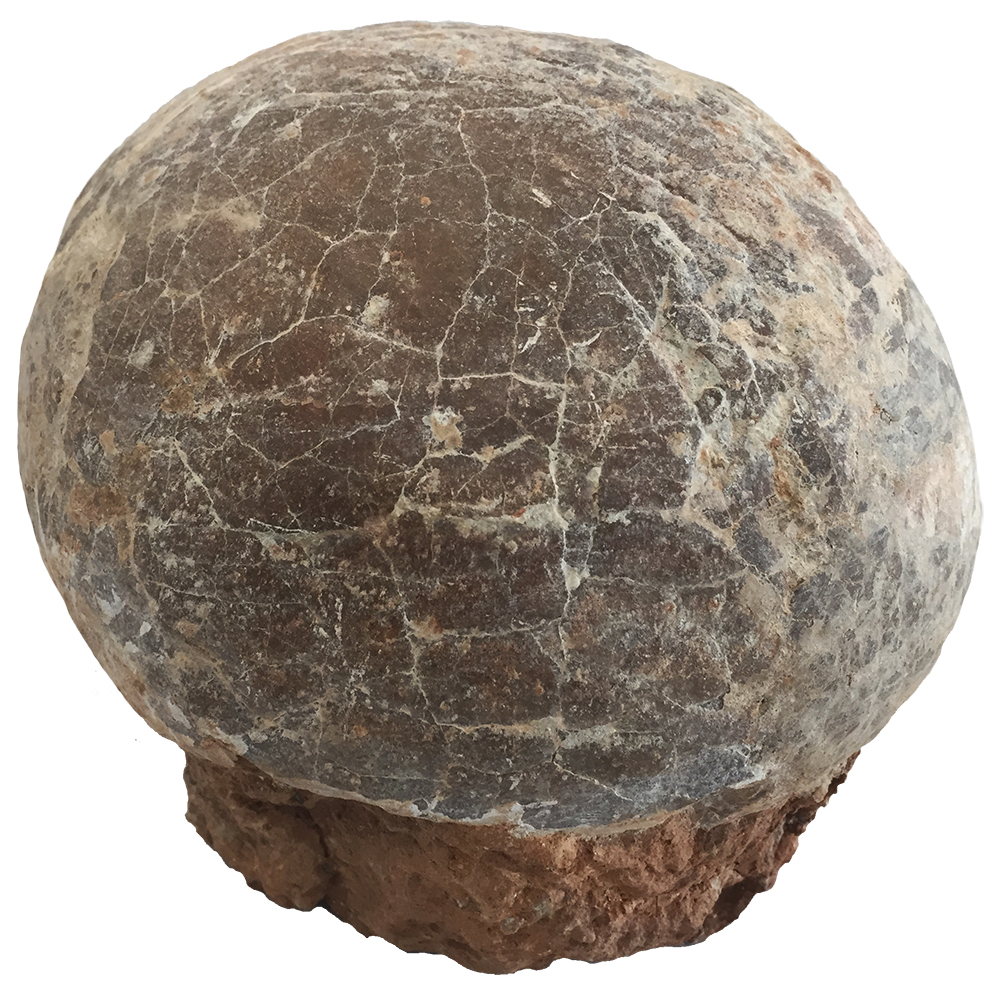
Gaogou Fm., Henan Province, China - Late Cretaceous ~100 MYA
Preserved dinosaur embryos are rare as their delicate, poorly mineralized bones seldom survive. Consequently, we often do not know which type of dinosaur laid which egg, so eggs are given their own naming system.
Dendroolithus eggs are found in China and Mongolia. One immense clutch at Tumiaoling Hill in China’s Hubei Province included 77 eggs. Dendroolithus eggs were probably laid by therizinosaur, sauropod, or ornithopod dinosaurs although they are often assumed to be hadrosaur eggs. There are three main types of known dinosaur eggs based on their shell structures. Those with a spherulitic microscopic texture like this egg are typical of sauropods and hadrosaurs, while prismatic textures occur in other ornithopod eggs, and a more layered ornithoid texture is found in theropod eggs (including modern birds). However, in 2020 a clutch of Protoceratops embryos were discovered curled up in fetal positions but without mineralized shells present. Instead, the embryos were surrounded by thin films that were the remains of soft-shelled eggs. This was our first recognition that not all dinosaurs laid mineralized hard-shelled eggs. Hard shelled eggs appear to have arisen at least three times in dinosaur lines, in sauropods, ornithopods, and of course theropods.
The root word ‘oolithus’ in the Dendroolithus name is appropriately Latin for ‘stone egg’.